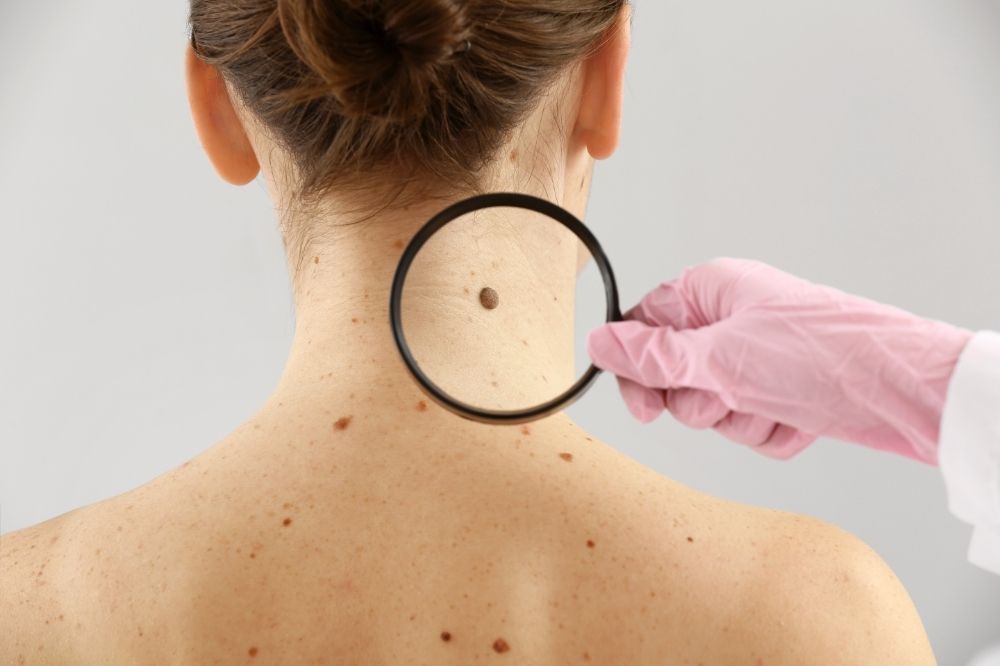Lesions formed by melanocyte cells, which are normally found in our skin, are called nevi. It can be light-dark brown, black and blue in color. The most important factors in the formation of moles are familial predisposition and sun. Although it is more common in open areas such as the face, hands and arms, it can occur in any part of the body. Most moles are benign and harmless. However, some types of moles can turn into skin cancer, which we call melanoma, that can be fatal. Studies have shown that people with many moles on their body are at higher risk of developing melanoma in the future than those with fewer moles. For this reason, a dermatologist should be consulted to find out the risk of a mole that occurs in our body, and a dermatoscopic examination should be performed if necessary.
Dermatoscopy is the superficial microscopic examination of the skin. It is used to diagnose moles and different lesions on the skin. With this examination method, moles are enlarged and details that cannot be seen with the naked eye are evaluated correctly.
You should definitely consult a dermatologist if you see enlargement of the mole over time, irregularity around it, asymmetrical appearance, color change, bleeding or itching. Your dermatologist will determine the risk level of your mole with the ABCDE rule method while examining the moles.
ABCDE rule;
- (Asymmetry); one half of the mole does not resemble the other half,
- (Border); Irregular mole borders,
- (Color); the color of the mole is not homogeneous,
- (Diameter); mole greater than 6 mm in diameter,
- (Evolution); It is a change in the character of a pre-existing self.
Malignant melanoma; It is a skin cancer that originates from melanocyte cells in the skin. If not detected early, it spreads quickly and is fatal. While the majority of this skin cancer develops spontaneously, some develop over a pre-existing mole. It can be effectively treated when diagnosed at an early stage. For this reason, a dermatologist should be consulted in case of changes in the character (color, shape, size) of the moles on the body.




